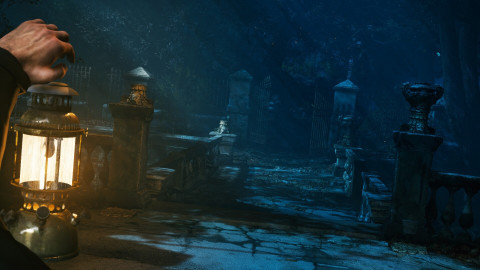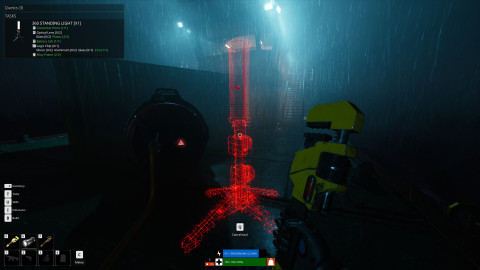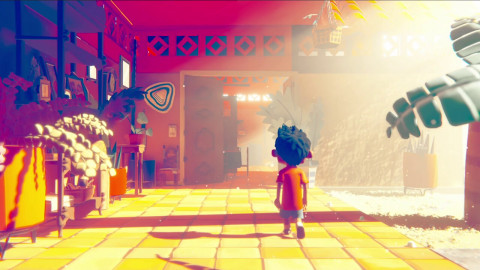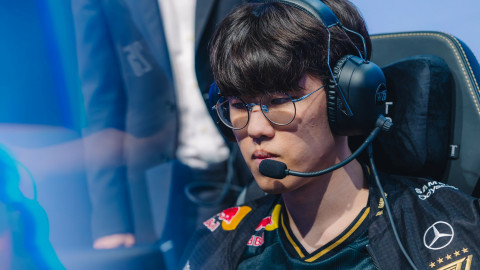
In March 2015, a game was released exclusively for PS4. It was Helldivers, the latest creation from Arrowhead Studios, the developers behind the acclaimed Magicka. With its half-mad concept of a special forces unit delivering democracy through mass bombings in a quasi-totalitarian society, this top-down run-and-gun game received exceptionally positive feedback upon its release.
Despite belonging to a somewhat dated genre, even by 2015 standards, the marriage of Arrowhead Studios' expertise in the top-down action genre, cultivated through Magicka, with their unique concept, made for a quite successful coupling. With systems like the Konami Command-inspired Stratagem system and the immediate reinforcement mechanics as the Helldivers special forces spread democracy throughout the galaxy, the fun of Helldivers was indeed genuine. So much so that even SCE (now SIE) ventured into PC distribution for the first time.
And now, nine years later, the official sequel to Helldivers has been released. Set a century after the events of the original, amidst the chaos of rebellions erupting beneath the heel of the Super Earth's conquest of the cosmos, and with the Helldivers disbanded after reclaiming the universe from rebel factions that had seized several planets, the basic concept is to reconquer the universe from the rebel factions that had seized some planets.
Given the consistent theme with the previous game, the structure itself remains largely similar to its predecessor. However, Helldivers 2 has changed significantly in many respects. If other game series had gradually introduced such changes over several numbered sequels, Helldivers 2 showcases them all at once. But as we all know, change doesn't always equate to improvement. Let's now examine whether the changes in Helldivers 2 have been successful.

Is this Helldivers?
For those who have played the previous installment, you would have sensed it just from looking at the gameplay screen. The first impression might be, "Is this Helldivers?" followed by the realization, "Yes, it is." This is perhaps the most daring change I've seen in any sequel. Helldivers 2 boldly discards the most significant feature of its predecessor, the top-down perspective, in favor of a contemporary back view. It's akin to the transition from GTA 2 to GTA 3 or the evolution seen in the Final Fantasy series from the 5th to the 7th installment.
Naturally, the gameplay has changed significantly in many aspects. Switching from a top-down to a back view isn't just about changing the camera angle. It introduces a new z-axis, altering the player's perspective and the visible area. To provide a gameplay experience similar to the previous one, many elements must change together.

However, the core values of the game must remain unchanged. This is the part where the expectations of the fans of the previous game are at stake. If we were to summarize the fun of the previous game, Helldivers, in one sentence, it would be as follows:
"Engaging in relentless combat amidst extremely hostile environments and various incidents, fighting endlessly to win."
This sentence encapsulates the charm of the Helldivers series, its differentiation from other games, and its core essence. The top-down shooter perspective and systems like the Stratagem activated by the Konami Command are appealing aspects, but these elements do not represent the game. Ultimately, Helldivers is a game that embodies the process of battling through waves of enemies, explosions, and collisions in hostile environments while enduring constant reinforcements and endless missions. If we can preserve this excitement, the camera's position becomes less important.

Helldivers 2 also maintains the core fun of its predecessor. While the change in camera perspective led to several system alterations, it remains true to the essence of the original. With the introduction of the Z-axis and a much smoother shooting feel, the likelihood of friendly fire has significantly decreased, but now there's a limit on the number of reinforcement requests. Additionally, while the chance of misplacing firepower-support Stratagems has decreased, the randomness of where the rounds hit and the increased blast radius raise the risk of blunders.
Enemies may now jump into the gamer's view, and requested airstrikes might mistakenly land on hillsides, vaporizing allies, or missiles bouncing into the air and accidentally obliterating a fellow soldier. The dynamics have shifted somewhat, but the world of Helldivers is still fraught with chaos.
Still Helldivers
That's not all. While it's been said that Helldivers 2 successfully transitioned into a back-view third-person shooter while retaining the core fun of Helldivers, this game is defined by more than just that. The fact that the insane concept, a hallmark of the Helldivers series, remains intact is another feature that can be classified as a strength.
As briefly mentioned earlier, the world of Helldivers is exceptionally unique. Classified under the name "Super Earth," humanity reigns as the universe's overlords, having conquered space a century ago. The once-scattered "bugs" became subjugated by Helldiver bombardments and became pawns of democracy, while cyborgs, who once hid from humanity's gaze, were crushed under oppression. The technologically advanced alien civilization, the Illuminates, managed to resist for a while but eventually succumbed to humanity's preemptive strikes under the guise of mass destruction weapons.

And now, a century later, with some bugs and cyborgs evolving into outright machines and rising up to threaten Super Earth's security, the disbanded Helldivers are once again called into action after a hundred years. With no wars for a century, the equipment and technological level remain unchanged. Still, the ridiculous production capacity that grants even regular infantry the authority to request air support and artillery hasn't changed, so the combat dynamics remain much the same as they were a hundred years ago.
Helldivers 2 encapsulates this virtual century-long gap and the overall concept of the game. Traditional catchphrases like "Say hello to democracy!" and "How about a nice cup of LIBER-TEA?" persist, and the planetary occupancy displayed on the galactic map and the real-time fluctuation of Helldivers deployed and casualties remain the same. For players familiar with the previous installment, the scent of the predecessor permeates throughout the game.
The equipment unlocking system in the game consists of four resources. Medals are used for unlocking equipment, credits for unlocking Stratagems, and samples for ship upgrades, while super credits, a premium currency, are used when purchasing limited items. However, there's no need to purchase super credits as you can obtain a sufficient amount in-game. While distinctive, these items are not particularly superior.

However, the stage of the game has changed somewhat. Since humanity had already pacified space a century ago, all battlefields visited by Helldivers bear traces of humanity. These remnants become various additional contents within the game.
For example, at the outset of Helldivers' deployment, only the main mission area and enemy spawning areas are roughly visible on the map. However, by reclaiming radar bases scattered across the battlefield, the entire map structure becomes visible. Similarly, restoring artillery bases and loading shells allows the acquisition of separate Stratagems, ranging from smoke grenades to small nuclear warheads. Abandoned residences or crashed transport ships are littered with samples and ammunition, and items and combat equipment hidden by residents can be found throughout the map. There are even cases where dormant hell bombs from previous wars explode, wiping out the entire team.


In this manner, the changing battlefield while resolving additional missions isn't limited solely to human traces. Some Stratagems may be restricted by interference waves or anti-aircraft fire, but destroying them restores the Stratagems to normal operation, and thick fog obscuring the view dissipates upon destroying nearby fog spawners. Naturally, resolving additional missions for better rewards and smoother gameplay is recommended. However, this isn't an easy task.
The game's battlefield is significant, with missions taking longer than expected as Helldivers engage in battles with enemy reinforcements while destroying enemy outposts and resolving additional missions. There are times when you might fight for nearly five minutes in a single area, or half of the mission time might pass without even touching the main objective.
While Helldivers 2 imposes a 40-minute time limit for major missions, there are plenty of occasions where 40 minutes aren't enough. There are frequent instances of players scrambling to complete the mission objectives, only to barely escape in a rush towards the mission zone. And throughout all of this, the essence of Helldivers, the relentless pursuit of victory, becomes a catharsis for gamers.

At this point, you might think the game is too challenging, but that's not necessarily the case. As you accumulate experience and knowledge while playing the game and acquire better equipment, your clear times gradually decrease. While the game remains chaotic, especially with random matchmaking, with teamwork being essential, high-difficulty missions can be easily overcome with well-coordinated team members. And that, too, is incredibly enjoyable. Like being part of a skilled special forces unit, the satisfaction of coordinating attacks with your team members and cleanly escaping is as enjoyable as laughing in the midst of chaos and narrowly escaping through the evacuation line.
Even if the game goes awry and becomes a mess, there's fun in that, and even if you breeze through it like a walk in the park, the experience is different, but it's still enjoyable in its own way.
No game is perfect
However, Helldivers 2 is not a perfect game. No matter how great a game is, there are flaws. If the flaws are merely annoying, it's fortunate, but if they are severe enough to ruin the game, it becomes a significant problem. Internally, Helldivers 2 has three main drawbacks: unclear controls, various bugs, and heavily biased equipment balance.
The controls are not particularly bothersome during combat, but when picking up items from the ground, it can be quite frustrating. Even though you press the pickup key, sometimes items aren't collected properly and need to be picked up two or three times, and there are glitches where items get buried in the terrain during the dropping process, making them uncollectible. While weapons and equipment can be called back, making it somewhat inconvenient, there are instances where samples collected for 30 minutes are buried in the terrain and cannot be picked up. As you might imagine, this is incredibly irritating.
Various bugs seem to be quite common. There are minor bugs, such as getting stuck in terrain or being trapped inside a ship and needing to restart the game, as well as annoying bugs like the extraction not landing or already collected items still being visible. In any case, it's not a game with few bugs.

Equipment balance is also an issue. Currently, the primary weapon used in Helldivers 2 is the Breaker shotgun, which accounts for over 80% of weapon usage. While most other weapons have drawbacks, the Breaker shotgun is a well-rounded weapon capable of both close-range and long-range combat. It’s unlocked relatively early, so everyone carries a Breaker. While the rate of fire and scopes of weapons can be adjusted, upgrades like attaching a bayonet to weapons are impossible, leaving most weapons that can’t have close-quarter combat equipment obsolete.
While the Helldivers series is known for its leniency towards accidents and its emphasis on brutal combat, intentionally causing accidents and pursuing discomfort is not what the game is about. Naturally, equipment balance becomes a problem.

Moreover, there are external issues such as unstable matchmaking or crashes. Doubtful introductions like nProtect and quick-match matchmaking that take dozens of attempts to succeed, as well as crashes that occur at critical moments, are causing stress to numerous gamers even now. There have been cases where a friend who enjoyed the game together during the New Year's holiday ended up giving up the game, saying, "I keep getting kicked out, so I can't play."

Fun is all that matters
In summary, Helldivers 2 is a successful sequel that maintains the core gameplay and fun of the original game despite the adventurous attempt to transition from top-down to back-view. Naturally, it retains the gaming fun shown in the original game and shows a more developed form suitable for the current time.
Maintaining the core fun of a sequel or a subsequent work is natural, but at the same time, it is also very challenging. Attempting to create something better can sometimes create discord with existing elements and result in a worse outcome, or the core motif may collapse after attempting drastic changes. In that sense, Helldivers 2 is a great sequel.

However, to extend the expiration date of this fun, continuous maintenance and post-launch management are necessary. It should not only involve the horizontal growth of content but also steady efforts to fix bugs and crashes.
Nevertheless, thanks to the retention of the "core fun" mentioned earlier, this game's fun is genuine. From the black comedy concept of making fascist regimes proclaiming democracy the protagonists to the chaotic gameplay, and further to the catharsis of victory and escape. It's a game that, despite its flaws, is so enjoyable that we say, "We curse while playing, but we still play." Helldivers 2 is exactly that kind of game. The fact that it's priced relatively cheaply, about half the price of recently released games, is also appealing.
All you need is a group of friends who can communicate well. With friends, Helldivers 2 guarantees definite fun. Of course, they should be "close" friends. Enough to laugh off all the friendly fire and fragging.

Sort by:
Comments :0








